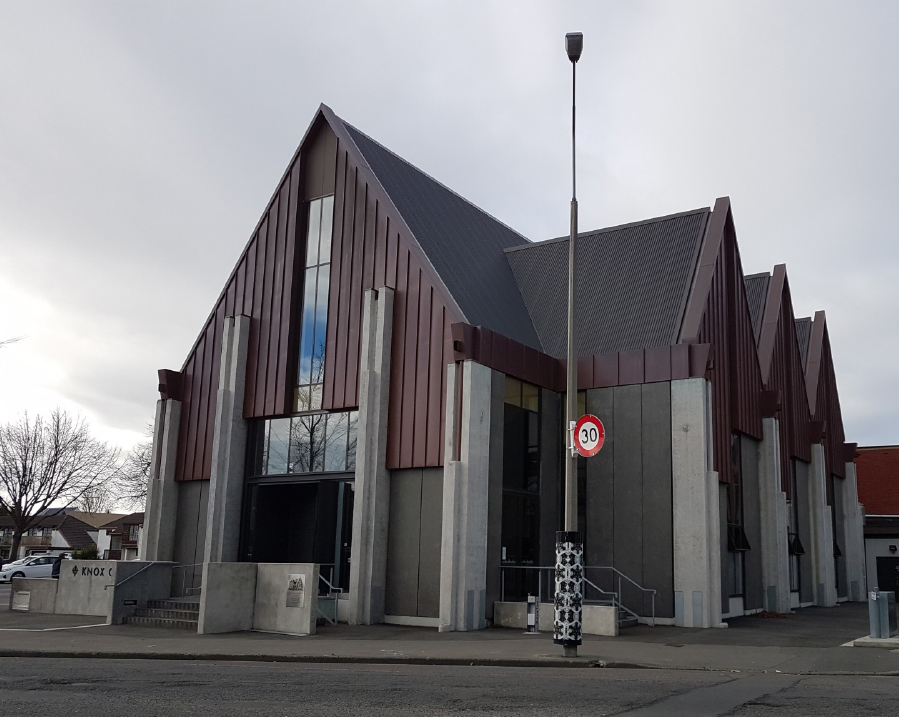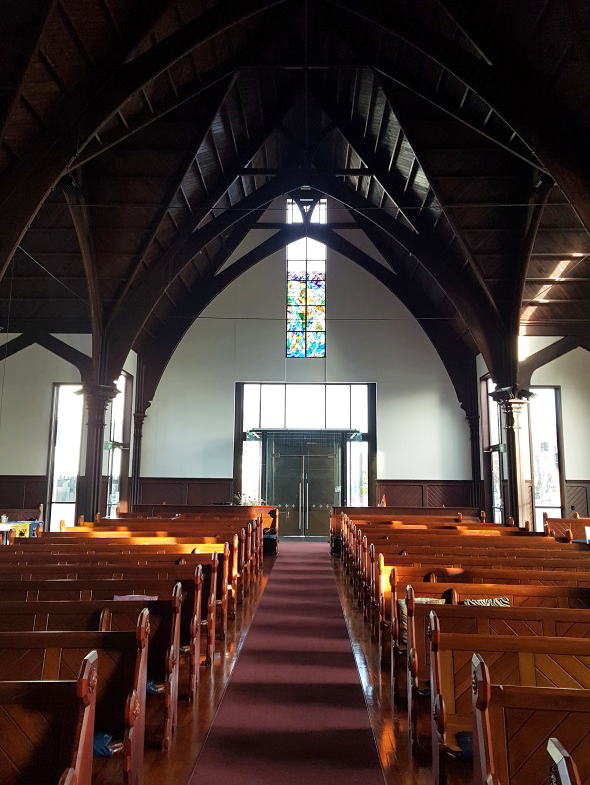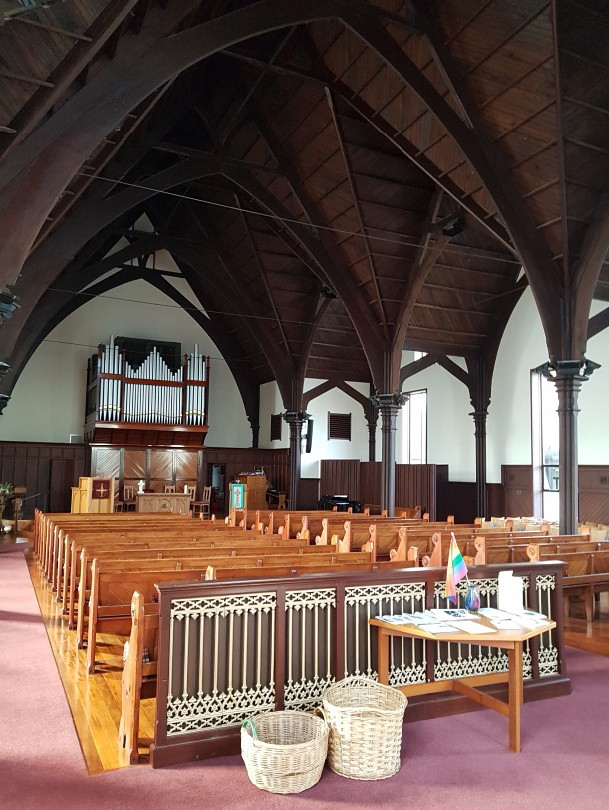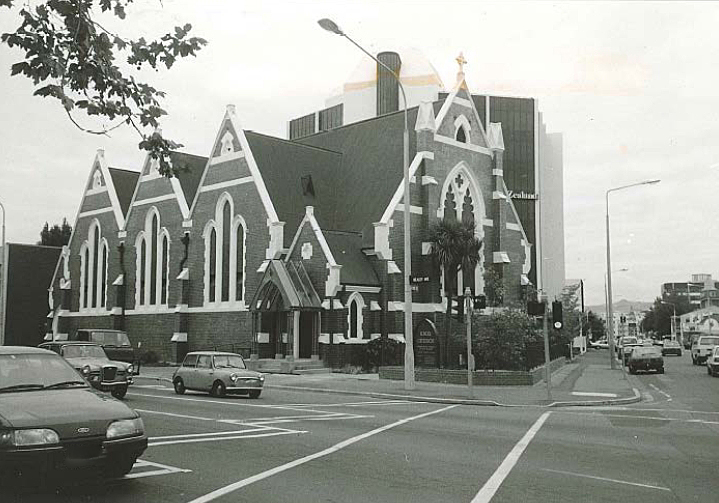Originally called the North Belt Presbyterian Church, the 1902 brick church was constructed to replace an earlier timber church of the same name, built in the early 1880s to the designs of S C Farr & Son Architects, at the eastern end of the same land parcel. In 1901 the land was officially transferred to the Presbyterian Church Property Trustees, the replacement church was designed by Robert William England and the foundation stone was laid. At the time of its completion in 1902, it was noted of the new multi-gabled brick church that ‘its outward appearance might not be pleasing to everyone, but that … the officers of the church found that their finances could not justify a spire, so that the architect had to cut his coat according to his cloth. But there could be no two opinions about the internal beauty of the church…’. The interior walls were plastered and had a high panelled dado. The dado, roof and all other interior woodwork was in oiled rimu and the seats were kauri.
In 1904 the church was renamed Knox Presbyterian Church. Many people have been associated with the church, including the Reverend Robert Erwin, who was Minister there for 39 years (1883-1922) and was later elected third moderator of the Presbyterian Church of New Zealand. Minor changes were made to the building, including some interior refurbishment in 1990-1, but it remained largely unchanged for over 100 years. However, in the dramatic events of the Canterbury Earthquakes of 2010-11, the exterior of the church was badly damaged and subsequently deconstructed to a point where only the original internal timber roof form and columns remained. These were then incorporated within a new design, maximising the views of the heritage interior, by Wilkie and Bruce Architects. The church reopened again at the end of 2014. Knox Church (Presbyterian) was the Seismic Award winner at the Canterbury Heritage Awards in 2014, in recognition of the retention and restoration of the timber interior within a contrasting new exterior envelope.
Situated on a prominent site at the corner of Bealey Avenue and Victoria Street, at the northern end of the ‘Four Avenues’ that define the Christchurch CBD, the church retains the same scale as the 1902 building but now has a completely different exterior. The modern exterior shell is constructed largely of copper sheeting and glass, with post tensioned concrete buttresses and corrugated steel roof cladding. In contrast, the interior comprises original timber features – roof trusses, columns and panelling –and the 1902 Edgar Jenkins organ which was upgraded by the South Island Organ Company following quake damage.




Location
List Entry Information
Overview
Detailed List Entry
Status
Listed
List Entry Status
Historic Place Category 2
Access
Private/No Public Access
List Number
3723
Date Entered
6th September 1984
Date of Effect
5th June 2019
City/District Council
Christchurch City
Region
Canterbury Region
Extent of List Entry
Extent includes part of the land described as Pt Sec 22 Town of Christchurch (RT CB31B/714), Canterbury Land District, and the building known as Knox Church (Presbyterian), thereon. (Refer to map in Appendix 1 of the List entry report for further information).
Legal description
Pt Sec 22 Town of Christchurch (RT CB31B/714), Canterbury Land District
Location Description
Knox Church itself has contextual significance and the interior forms part of that whole. It is located on a prominent corner site at the busy intersection of one of the four wide avenues traditionally recognised as marking the boundaries of the central city, and the main arterial of Papanui Road - Victoria Street. Situated right on the corner, it is highly visible, and constitutes a city landmark. The church forms part of a complex of buildings including the 1963 hall.
Stay up to date with Heritage this month
